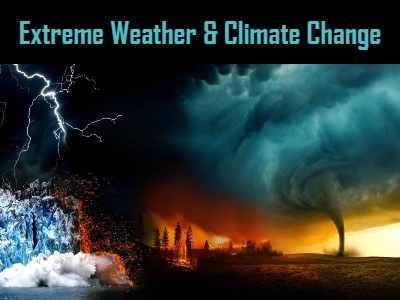
Climate Change
Climate Change is caused by a simple shift in energy balance. The Earth takes in a nearly constant amount of solar short-wave ultraviolet radiation. In order to remain in balance, the Earth needs to radiate an equal amount in terrestrial long-wave infrared radiation out into space. The current climate crisis we are in now is due to an excess amount of carbon dioxide, which is a potent greenhouse gas(GHG), in the lower atmosphere(troposphere). GHGs like CO2 can persist in the atmosphere for hundreds of years. The excess CO2 traps the Earth’s radiation in the troposphere creating an energy imbalance and warming the planet, almost like a blanket. The CO2 excess is mostly due to electricity generation from burning coal, oil and gas. Transportation, agriculture, and industrial processes contribute GHGs significantly as well. The Earth’s natural carbon sinks, which remove CO2 from the atmosphere, include plants, forests, soil, and ocean.
Resources:
NASA: Climate Change and Global Warming
Intergovernmental Panel on Climate Change
Yale Program on Climate Change Communications
Extreme Weather
It is important to untangle climate, weather, and seasons. The Earth is tilted on its axis as it orbits the sun each year. When the south pole is tilted towards the sun the northern hemisphere experiences winter while the southern hemisphere experiences summer. The seasons then flip hemispheres halfway around the sun as the north pole tilts towards the sun. As seasons change, weather is what happens in short periods of time over local regions. Climate is the weather patterns over very long periods of time and covering very large regions. Even though extreme weather events have become more infrequent as the climate warms, they have increased in intensity. Things like wildfires, hurricanes, downpours, floods have become more devastating. Extreme cold can dip further south as well during the Northern Hemispheric winter. We have been experiencing large dips southward from the polar vortex(cold air circulating the arctic) which can cause shockingly frigid conditions in areas unaccustomed to it. Still, in the aggregate, global temperatures have risen by 2 degrees Fahrenheit since 1880 and continue to climb.
Resources:
National Oceanic and Atmospheric Administration
